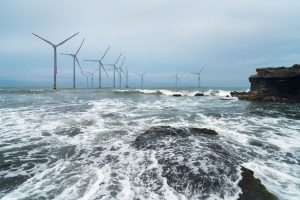China’s claims in the South China Sea have been strongly contested by the neighboring littoral nations and Western countries led by the United States. In 2016, an arbitral tribunal convened under the U.N. Convention on the Law of the Sea (UNCLOS) ruled against China’s expansive claim over the majority of the South China Sea and its encroachment into the Exclusive Economic Zone (EEZ) of the Philippines. Despite the tribunal’s ruling that China’s claim had no basis under international law, China’s presence did not diminish. Instead, China steadily and gradually expanded its control.
The term “salami slicing” describes the strategy of using small provocations that individually do not warrant a military response but collectively result in a significant strategic change. In the South China Sea, China established its presence by encroaching upon the EEZs of Southeast Asian countries based on a historical claim known as the “nine-dash line.” In the 1970s, China took control of the Parcel Islands from Vietnam; in 1995 it occupied Mischief Reef from the Philippines; and in 2012 it seized Scarborough Shoal, located just 120 nautical miles from the Philippines. More recently, China turned several coral reefs it controls in the South China Sea into artificial islands. Currently, China controls 27 outposts across the sea.
For Vietnam, the conflict centers around the Spratly Islands. In 2017, China threatened Vietnam, warning it to halt drilling activities in areas on Vietnam’s continental shelf, which falls within China’s “nine-dash line” claim. Vietnam’s inability to match Chinese military strength has forced it to strengthen ties with extra-regional powers to enhance its position in the South China Sea. However, this move increases the risk of Vietnam becoming entangled in the escalating geopolitics of major world powers.
The South China Sea is rich in oil and gas deposits, raising the stakes for the conflicting territorial claims between the littoral states and China. However, today the world is moving away from coal, and although phasing out oil and gas might take a few decades, there is a definite trend toward renewable energy sources. Electric vehicles are becoming more affordable, and the cost of renewables is decreasing. Offshore wind energy, however, has been progressing slowly in the global energy mix. In the South China Sea, only a fraction of offshore wind energy is utilized compared to the East China Sea.
Technology is rapidly advancing, with floating wind turbines overshadowing traditional ground-mounted foundations. The wind speed is consistent and steadier in the deep ocean, making floating turbines more cost-effective than their ground-mounted counterparts. Moreover, there is a strong possibility of costs decreasing significantly in the coming decades.
The combination of offshore wind energy and green hydrogen offers a viable solution for transitioning from carbon-intensive energy sources to a greener and cleaner economy. Green hydrogen, produced using renewable energy, can serve as a low-carbon energy source for transportation and industries that are challenging to decarbonize, such as steel and cement production.
Furthermore, the strategy of integrating green hydrogen production with offshore wind energy is considered more cost-effective than transmitting electricity through undersea cables, especially for floating wind turbines. This integrated approach not only reduces costs but also creates opportunities for energy export to energy-hungry ASEAN countries.
Vietnam, with its coastal advantage and government support, has initiated investments in offshore wind energy. Vietnam’s growth in the offshore wind energy sector can also serve as a strategic counter-salami slicing approach to regain control over its territorial waters. Wind turbines could serve as a foundation for surveillance in the region. The sheer size of these turbines could delineate boundaries and provide a natural defense mechanism against China’s activities in Vietnam’s EEZ.
Matching China in counter-salami slicing is challenging. Purely military exercises in the region may escalate existing tensions, potentially leading to a divided Asia with major powers balancing on either side. Vietnam’s counter-salami slicing approach should be more subtle.
Hanoi could attract interest from countries like Australia and India, encouraging them to invest in the offshore wind sector. This could lead to the formation of an alliance for offshore wind energy development, involving active sharing of technology, knowledge, and personnel.
For now, floating technologies are in their early stages of adoption, and a significant number of offshore wind farms are situated within 5 kilometers from the coast. Although integrating floating offshore wind turbines without a substantial foundation in monopile-ground-mounted technology presents challenges, technological advancements from Europe could propel Vietnam forward in the South China Sea, provided the necessary supporting infrastructure such as ports, vessels, and fabrication facilities are in place.
Offshore wind farms often face high operational and maintenance costs, accounting for 20-25 percent of the total lifecycle cost of new projects. Nevertheless, emerging developments such as drone-based maintenance activities have the potential to significantly reduce these costs. This advancement provides an additional platform for Vietnam to assert control over its sovereign waters and monitor Chinese illegal activities in the South China Sea.
The strategy of counter-salami slicing works effectively in the South China Sea when approached with a non-aggressive stance. Clean energy is regarded as a tool that can promote peace and foster regional cooperation. However, implementing deep-rooted marine spatial planning is crucial to avoid conflicts with stakeholders while utilizing locations for energy generation with surveillance capabilities.

































